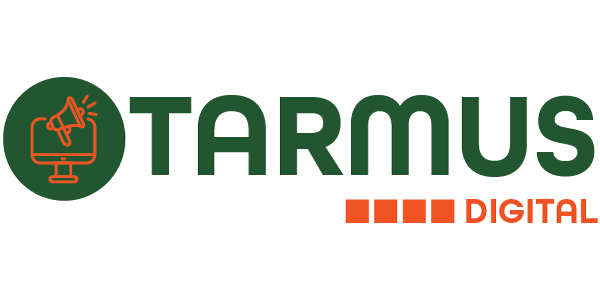Introduction
Technology is everywhere! It pervades our daily lives from the moment we get up until we go to bed. It has changed how we work, play, and interact with the world. But with great power comes great responsibility. To truly benefit from technology, we must learn to harness its potential effectively. Let’s dive into the evolution of technology, understand its vast potential, and explore how we can make the most of it.

The Evolution of Technology
Early Innovations
The wheel was one of humanity’s earliest inventions, revolutionizing transport and labor. Similarly, the printing press transformed information dissemination, making books accessible and spreading knowledge far and wide.
Industrial Revolution
The Industrial Revolution brought about mechanization and mass production. Innovations like steam engines drastically improved transportation and manufacturing, setting the stage for modern industry.
Digital Age
We’ve now entered the Digital Age, where the internet connects us globally and mobile technology keeps us constantly in touch. This era is defined by rapid communication and information exchange, making the world a smaller, more connected place.
Understanding the Potential of Technology
Enhancing Efficiency
Automation in industries and productivity tools for businesses have redefined efficiency. Machines may now do monotonous chores, freeing humans to concentrate on more complex and creative activities.
Improving Communication
Social media platforms and video conferencing tools have transformed how we communicate. We can now connect with anyone, anywhere, anytime, fostering both personal and professional relationships.
Advancing Healthcare
In healthcare, medical devices and diagnostic tools have improved patient outcomes. Telemedicine allows for remote consultations, making healthcare accessible to more people than ever before.
Technology in Everyday Life
Smart Homes
Our homes are getting smarter with automation systems that control lighting, security, and appliances. These smart homes not only enhance convenience but also promote energy efficiency.
Education and Learning
The advent of online courses and e-learning platforms has democratized education. Virtual classrooms and interactive tools make learning engaging and accessible to all.
Entertainment and Media
Streaming services and digital content have revolutionized entertainment. We may now watch movies, TV shows, and listen to music at any time and from anyplace. Gaming and virtual reality provide immersive experiences that challenge the boundaries of reality.
Business and Technology
E-commerce
Online shopping has become the norm, with marketplaces offering a vast array of products. Digital payment systems ensure secure and convenient transactions.
Data Analytics
Businesses harness big data to gain insights and make informed decisions. Predictive analytics helps anticipate trends and optimize operations.
Cybersecurity
As our reliance on digital platforms grows, cybersecurity becomes increasingly important., becomes crucial. Protecting sensitive information from cyber threats is a top priority for individuals and businesses alike.
Emerging Technologies
Artificial Intelligence
Artificial Intelligence (AI) is revolutionizing various industries with applications ranging from customer service to advanced analytics. Machine learning enables systems to learn and adapt, enhancing automation.
Blockchain
Blockchain technology underpins cryptocurrencies like Bitcoin. It’s also used for decentralized applications and smart contracts, offering transparency and security in digital transactions.
Internet of Things (IoT)
The Internet of Things (IoT) connects devices, creating smart cities and improving sectors like agriculture and manufacturing. IoT solutions enhance efficiency and enable data-driven decision-making.
Ethical Considerations
Privacy Concerns
With the growth of data, privacy is paramount. It is critical to strike a balance between convenience and security when collecting data, as well as obtaining user consent.
Digital Divide
Not everyone has equal access to technology, creating digital divide. Bridging this gap requires initiatives and programs that provide technology access to underserved communities.
Environmental Impact
Technology has an environmental footprint. Addressing e-waste through recycling and adopting sustainable practices are essential to minimize this impact.
Future of Technology
Innovations on the Horizon
Quantum computing and biotechnology are poised to bring groundbreaking changes. These innovations could revolutionize fields from medicine to materials science.
Preparing for Change
To keep up with technological advancements, we must embrace lifelong learning and continuously develop new skills. Adapting to new technologies in the workplace is vital for future success.
Additional Insights into Harnessing Technology’s Potential
As we delve deeper into the subject, it’s essential to explore more specific areas where technology can be harnessed to maximize its potential. This includes fostering innovation, driving sustainable practices, and ensuring inclusivity.
Fostering Innovation
Research and Development
Investing in research and development (R&D) is critical for technological advancement. Companies and governments that prioritize R&D are often at the forefront of innovation, creating new products and services that drive economic growth.
Startup Ecosystems
Supporting startup ecosystems can lead to significant technological breakthroughs. These ecosystems provide the necessary resources and support for entrepreneurs to develop innovative solutions that address current and future challenges.
Driving Sustainable Practices
Green Technology
Green technology technology aims to create ecologically friendly products and processes.This includes renewable energy sources like solar and wind power, energy-efficient appliances, and sustainable manufacturing practices.
Circular Economy
A circular economy seeks to reduce waste and make the best use of resources. This model promotes recycling, reusing, and refurbishing products, which can significantly reduce the environmental impact of technological advancements.
Ensuring Inclusivity
Digital Literacy
Promoting digital literacy is essential to ensure everyone can benefit from technological advancements. Educational programs and initiatives that teach digital skills can empower individuals and communities, reducing the digital divide.
Accessible Technology
Designing accessible technology means creating products that can be used by everyone, including those with disabilities. This can involve features like voice recognition, screen readers, and other assistive technologies.
Case Studies of Successful Technology Integration
Examining real-world examples of how technology has been successfully harnessed can provide valuable insights and inspiration.
Estonia’s Digital Transformation
Estonia is a digital transformation pioneer, having established a comprehensive e-government system. Citizens can access almost all government services online, from voting to filing taxes, which has increased efficiency and transparency.
Singapore’s Smart Nation Initiative
Singapore’s Smart Nation Initiative seeks to use technology to improve the quality of life for its residents. This includes smart urban mobility solutions, digital healthcare services, and a focus on cybersecurity to protect digital infrastructure.
Tesla’s Renewable Energy Solutions
Tesla has made significant strides in renewable energy with its electric vehicles and solar products. By integrating sustainable practices into its business model, Tesla is helping to reduce carbon emissions and promote the use of clean energy.
Best Practices for Harnessing Technology
To fully harness the potential of technology, adopting best practices is crucial. Here are some key strategies:
Continuous Learning
Keeping up with the newest technological trends and breakthroughs is critical. This can be achieved through continuous learning, attending industry conferences, and participating in professional development courses.
Collaboration and Networking
Collaborating with other professionals and organizations can lead to innovative solutions. Networking opportunities, such as industry meetups and online forums, can facilitate knowledge sharing and collaboration.
Ethical Considerations
Always consider the ethical implications of technological advancements. This includes maintaining privacy, preventing abuse, and encouraging diversity. Creating explicit ethical rules can aid in navigating the intricacies of technology. Establishing clear ethical guidelines can help navigate the complexities of technology.
Preparing for a Technological Future
As technology continues to evolve, preparing for future advancements is essential. Here are some steps to take:
Adapting to Change
Being adaptable and open to change is crucial in a rapidly evolving technological landscape. This includes being willing to learn new skills and adapt to new tools and processes.
Fostering Innovation
Encourage a culture of innovation within organizations and communities. This can involve providing resources for experimentation, rewarding creative thinking, and fostering an environment where new ideas are welcomed.
Emphasizing Human-Centric Design
Technology should be created with the end user in mind. Human-centered design aims to create intuitive and accessible products that suit the needs of all users. This approach ensures that technology enhances rather than complicates our lives.
Conclusion
Technology holds incredible potential to revolutionize our lives, industries, and the world at large. From early innovations like the wheel and printing press to modern marvels like artificial intelligence and blockchain, each advancement has reshaped how we live and work. By enhancing efficiency, improving communication, and advancing healthcare, technology has proven to be a powerful tool in driving progress.
However, the key to truly harnessing technology’s potential lies in our ability to use it responsibly and inclusively. This involves addressing ethical considerations such as privacy concerns, bridging the digital divide, and minimizing environmental impact. Fostering innovation, promoting continuous learning, and emphasizing human-centric design are essential steps in preparing for a technological future.
By understanding the profound impact of technology and actively engaging with it, we can unlock new opportunities, drive sustainable practices, and create a more connected and equitable world. Embrace the power of technology, stay informed, and be proactive in leveraging its capabilities to build a better future for all.
FAQs
What are the advantages of cultivating a culture of innovation? Fostering a culture of innovation encourages creativity, leads to the development of new products and services, and can provide a competitive edge in the market.
How can green technology contribute to sustainability? Green technology promotes the use of renewable resources, reduces waste, and minimizes environmental impact, contributing to a more sustainable future.
What steps can organizations take to ensure digital inclusivity? Organizations can promote digital literacy, design accessible technology, and implement policies that ensure everyone has access to digital tools and resources.
Why is continuous learning important in the technological landscape? Continuous learning is essential to keep up with rapid advancements, acquire new skills, and stay competitive in a technology-driven world.
How can individuals prepare for technological changes in the workplace? Individuals can prepare by staying informed about industry trends, participating in professional development, and being open to learning and adapting to new technologies.

